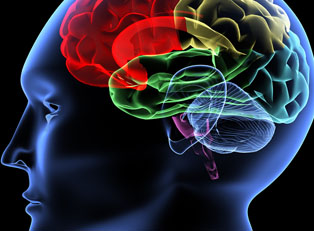Cerebral palsy is a neurological disorder that occurs when the cerebral cortex, the outer portion of the brain, becomes damaged or develops abnormally. This area of the brain is responsible for posture, balance, and movement. Cerebral palsy is a permanent condition that limits a person’s ability to control his or her own movements. Below is a list of risk factors that may increase the likelihood that cerebral palsy will occur.
While risk factors do increase the risk of cerebral palsy, it is important to note that healthy children are also born when these circumstances are present. Furthermore, the exact cause of cerebral palsy cannot be pinpointed in many cases.
Congential Cerebral Palsy
When brain damage occurs during pregnancy, the birthing process, or within the first 28 days of life, it is defined as congenital cerebral palsy. Congenital cerebral palsy occurs in 85%-90% of all cases, according to the Centers for Disease Control and Prevention (CDC).
Many times, the cause of congenital CP is often indeterminable. However, there are certain conditions that affect the environment within the womb or within a fetus’s developing brain that are strongly correlated with congenital CP such as:
- genetic irregularities that cause abnormal development of the brain’s white and grey matter
- infections
- lack of oxygen due to clotting or the birthing process
- inflammatory conditions
Other common risk factors associated with pregnancy include:
- sexually transmitted infections (STIs) such as syphilis, herpes, and pelvic inflammatory
- viral infections such as cytomegalovirus, rubella, and chickenpox
- parasitic infections, such as toxoplasmosis
- maternal seizures
- thyroid insufficiency in the mother
- maternal intellectual disabilities
- exposure to environmental toxins, such as methyl mercury
- maternal-fetal blood incompatibilities, such as Rh incompatibility
- higher-than-normal levels of protein in the mother’s urine
- blood clotting that may cause fetal stroke
- maternal fever
- maternal stress
At birth, if the following risk factors are present, CP may be more likely:
- lack of oxygen for a period of time during labor and delivery
- low birthweight: less than five and a half pounds, but especially for less than three pounds and five ounces
- premature birth: before the 37th week, and especially before the 32nd week
- multiple births: the risk of CP increases with twins, triplets, and other multiple births, and especially when any of the siblings are stillborn
- low APGAR score
- severe jaundice
- infection, such as bacterial meningitis
Acquired Cerebral Palsy
Neurological damage or abnormal development can also occur later than the first 28 days of life. In these cases, the condition is classified as acquired cerebral palsy. Some factors associated with acquired CP are preventable, such as traumatic brain injuries that are caused by child abuse. Common influences are:
- bacterial meningitis, an infection that harms the brain
- viral encephalitis, an infection that causes swelling in the brain
- traumatic brain injury that could result from a fall, a car accident, or child abuse
- severe jaundice, a blood filtering problem that results in yellowing of the skin



